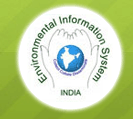Drinking Water
Principal sources
An estimated 50% of rural households were served by tubewell/handpump, while an estimated 26% and an estimated 19% were served by well and tap, respectively. About 70% and 21% of urban households reported being served by tap and tube well/ hand pump, respectively.
Distance of dwelling unit from principal source: Only about 31% of rural and 66% of urban households reported their principal source of drinking water to be within their premises. Further, about 60% and 32% households in rural and urban areas respectively were within 0.2 km from their principal source of drinking water.
The proportion of households having sole access in their principal source of drinking water was estimated to be much higher in urban areas than in rural areas, the estimates being 41% for urban areas and 23% for rural areas.
An estimated 13% of rural and 15% of urban households did not get sufficient drinking water from their principal sources. May, June and April were the worst months, and in that order, in this regard in both rural and urban areas.
At the aggregate level, about 85% of rural and 91% of urban households reported drinking water served by their principal sources to be of satisfactory quality. However, these proportions were much lower - between 53% to 67% - for households served by ‘other tank’/pond or river/canal/lake as their principal source.
Supplementary sources
About 18% of the households, in both rural and urban areas, reported using some supplementary source of drinking water.
Among households reporting use of some supplementary source of drinking water, tubewell/handpump was the most frequently reported source (37% in rural and 52% in urban areas), followed by well (36% in rural and 23% in urban areas).
Table 1: Percentage distribution of households by principal source of drinking water during 1998
| Source of drinking water |
% Of households in |
Rural |
Urban |
Tap |
18.7 |
70.1 |
Tube well, hand pump |
50.1 |
21.3 |
Well |
25.8 |
6.7 |
Tank/ pond reserved for drinking |
1.3 |
0.2 |
Other tank/ pond |
0.6 |
0.1 |
River/ canal/ lake |
1.3 |
0.2 |
Spring |
1.7 |
0.1 |
Tanker |
0.2 |
1.0 |
Other |
0.2 |
0.1 |
All |
100.0 |
100.0 |
Percentage distribution of households by number of calendar months in which they experienced insufficiency of drinking water from principal source during 1998
Sector |
Percentage of households reporting insufficiency of drinking water from principal source in |
No month |
1 month |
1 month |
3 month |
4 month |
5 month |
6 or more months |
All |
Rural |
87.0 |
0.3 |
3.4 |
4.9 |
3.1 |
0.6 |
0.7 |
100 |
Urban |
85.1 |
0.2 |
3.4 |
4.8 |
3.7 |
1.0 |
1.8 |
100 |
Percentage distribution of households reporting insufficiency of drinking water for some part of the year by measures normally taken when water was insufficient during 1998
Sector
|
Percentage of households among those reporting insufficiency of drinking water for some part of the year who report |
No measures taken |
Water supplied by local authority by vehicle |
Water supplied by charitable bodies |
Water obtained from neighbors |
Water purchase |
Other measures |
All |
| Rural |
23.8 |
4.7 |
0.7 |
24.1 |
1.7 |
45.1 |
100 |
| Urban |
17.2 |
7.5 |
0.7 |
23.8 |
5.8 |
45.1 |
100 |
Percentage of households filtering/chemically treating/boiling their drinking water during 1998
Sector |
Percentage of Households |
Filtering |
Chemically treating |
Boiling |
With plain clothes |
By other process |
| Rural |
15.2 |
2.9 |
1.2 |
4.3 |
| Urban |
22.7 |
12.9 |
3.3 |
11.0 |
Percentage distribution of households by principal source of drinking water and distance from source during 1998
| Principal source of drinking water |
Percentage of households (Rural) with principal source |
Number of sample house-
Holds |
| With in dwelling |
Outside dwelling but with in premises |
Outside premises at distance |
n.r |
all |
<0.2
km |
0.2-0.5 km |
0.5-1.0 km |
1.0-1.6 km |
>1.6 km |
| Tap |
19.1 |
22.0 |
55.9 |
2.3 |
0.4 |
0.1 |
0.1 |
0.0 |
100 |
16549 |
| Tubewell, handpump |
14.9 |
19.3 |
59.8 |
4.8 |
0.9 |
0.1 |
0.1 |
0.0 |
100 |
35955 |
| Well |
0.0 |
22.7 |
66.4 |
6.8 |
2.4 |
0.5 |
1.1 |
0.0 |
100 |
19731 |
| Tank/pond reserved for drinking |
0.0 |
9.6 |
65.1 |
10.7 |
4.7 |
4.1 |
5.7 |
0.0 |
100 |
1264 |
| Other tank/pond |
0.0 |
34.9 |
47.6 |
9.7 |
2.5 |
0.2 |
5.0 |
0.0 |
100 |
646 |
| River/canal/lake |
0.0 |
0.0 |
57.6 |
27.3 |
11.5 |
1.3 |
2.4 |
0.0 |
100 |
1314 |
| Spring |
0.0 |
0.0 |
39.2 |
22.6 |
5.6 |
31.8 |
0.8 |
0.0 |
100 |
2939 |
| Tanker |
0.0 |
22.6 |
71.0 |
1.1 |
0.6 |
0.0 |
4.8 |
0.0 |
100 |
147 |
| Other |
9.6 |
13.8 |
42.9 |
20.5 |
7.3 |
1.0 |
5.0 |
0.0 |
100 |
261 |
| n.r |
2.0 |
33.7 |
48.9 |
2.3 |
0.6 |
0.0 |
1.4 |
11.1 |
100 |
184 |
| all |
11.0 |
20.1 |
60.4 |
5.6 |
1.5 |
0.8 |
0.5 |
0.0 |
100 |
78990 |
| |
Percentage of households (Urban) with principal source |
| Tap |
45.8 |
25.3 |
27.1 |
1.3 |
0.3 |
0.2 |
0.0 |
0.0 |
100 |
22182 |
| Tubewell, handpump |
29.8 |
29.1 |
37.7 |
1.7 |
1.3 |
0.3 |
0.1 |
0.0 |
100 |
5767 |
| Well |
0.0 |
45.2 |
48.9 |
3.6 |
2.0 |
0.2 |
0.0 |
0.0 |
100 |
2237 |
| Tank/pond reserved for drinking |
0.0 |
10.1 |
46.9 |
15.9 |
19.8 |
0.0 |
7.2 |
0.0 |
100 |
165 |
| Other tank/pond |
0.0 |
6.7 |
56.1 |
15.1 |
16.8 |
5.2 |
0.0 |
0.0 |
100 |
77 |
| River/canal/lake |
0.0 |
0.0 |
54.5 |
16.6 |
28.8 |
0.0 |
0.1 |
0.0 |
100 |
133 |
| Spring |
0.0 |
0.0 |
92.5 |
4.4 |
2.9 |
0.2 |
0.0 |
0.0 |
100 |
315 |
| Tanker |
1.3 |
7.5 |
76.8 |
8.6 |
0.2 |
5.8 |
1.2 |
0.0 |
100 |
320 |
| Other |
15.6 |
3.4 |
47.6 |
13.1 |
5.8 |
9.6 |
3.9 |
1.1 |
100 |
80 |
| n.r |
80.4 |
0.0 |
5.6 |
0.0 |
0.0 |
0.0 |
0.4 |
13.7 |
100 |
47 |
| all |
38.6 |
27.1 |
31.5 |
1.7 |
0.7 |
0.3 |
0.1 |
0.0 |
100 |
31323 |
Percentage distribution of households with specific principal source of drinking water by quality of drinking water from that source during 1998
| Principal source of drinking water |
Percentage of households (Rural) with drinking water |
| Known to be polluted |
Having bad taste due to unknown causes |
Cloudy due to unknown causes |
Clear but contain excess of iron or other mineral |
Having other defects |
Of satisfactory quality |
n.r |
All |
| Tap |
0.7 |
0.6 |
0.9 |
2.6 |
0.8 |
90.3 |
4.1 |
100 |
| Tubewell, handpump |
0.8 |
1.3 |
1.4 |
7.6 |
1.9 |
85.3 |
1.8 |
100 |
| Well |
1.2 |
1.7 |
2.0 |
2.9 |
2.0 |
83.2 |
7.1 |
100 |
| Tank/pond reserved for drinking |
5.8 |
6.2 |
4.7 |
2.1 |
3.1 |
68.6 |
9.6 |
100 |
| Other tank/pond |
8.3 |
3.3 |
14.5 |
2.7 |
10.4 |
55.4 |
5.4 |
100 |
| River/canal/lake |
8.4 |
4.2 |
9.0 |
3.5 |
6.8 |
67.3 |
0.7 |
100 |
| Spring |
0.9 |
0.2 |
0.9 |
1.0 |
6.2 |
90.6 |
0.3 |
100 |
| Tanker |
0.1 |
1.3 |
0.6 |
8.6 |
0.0 |
89.3 |
0.0 |
100 |
| Other |
5.9 |
2.0 |
2.0 |
0.8 |
12.5 |
76.9 |
0.0 |
100 |
| all |
1.1 |
1.3 |
1.7 |
5.2 |
1.9 |
85.1 |
3.7 |
100 |
| |
Percentage of households (Urban) with drinking water |
| Tap |
2.0 |
0.7 |
2.0 |
1.8 |
0.7 |
92.6 |
0.1 |
100 |
| Tubewell, handpump |
0.9 |
2.7 |
1.0 |
7.6 |
1.3 |
86.1 |
0.3 |
100 |
| Well |
2.6 |
1.6 |
1.3 |
2.0 |
1.3 |
89.5 |
1.6 |
100 |
| Tank/pond reserved for drinking |
20.8 |
0.9 |
0.2 |
0.7 |
0.3 |
76.8 |
0.3 |
100 |
| Other tank/pond |
0.0 |
5.2 |
26.9 |
0.0 |
0.0 |
65.2 |
0.0 |
100 |
| River/canal/lake |
12.7 |
0.0 |
27.3 |
0.1 |
7.1 |
52.7 |
0.0 |
100 |
| Spring |
0.0 |
0.3 |
0.3 |
0.0 |
2.4 |
97.0 |
0.0 |
100 |
| Tanker |
0.2 |
1.4 |
0.5 |
2.6 |
5.3 |
89.8 |
0.2 |
100 |
| Other |
0.5 |
0.0 |
0.2 |
6.7 |
0.0 |
91.5 |
1.1 |
100 |
| all |
1.9 |
1.2 |
1.8 |
3.0 |
1.0 |
90.8 |
0.3 |
100 |
Drinking water and hygiene
In rural areas, about 18% of households reported to have filtered their drinking water but very few households reported to have chemically treated, or boiled, water before drinking. The situation was slightly better in urban areas, where the percentages of households reporting boiling and filtering of drinking water before consumption were 11% and 35%, respectively.
A vast majority of households (93% in rural and 96% in urban areas) reported storing their drinking water. However, many households (about 56% in rural and 49% in urban areas) reported the practice of dipping in a vessel without a handle to take drinking water out of the main storage container. |





